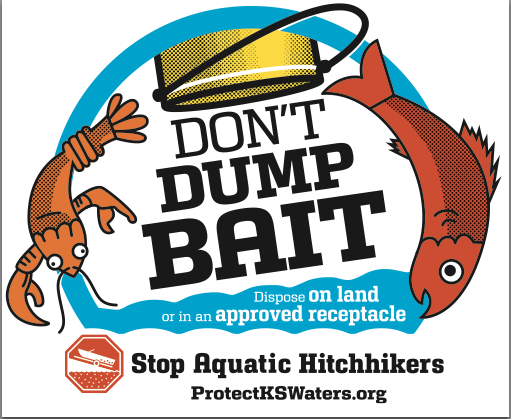Governor urges Kansans to help stop spread of nonnative aquatic species
May 28, 2014
As summer time quickly approaches and the temperatures are rising, Kansans who enjoy the outdoors may soon be headed to the lake or river for some fishing. However, Kansans should be aware of the nonnative fish that threaten Kansas’s lakes and rivers.
Aquatic nuisance species are animals and plants that are not native to Kansas. ANS can threaten lake and river ecology, harm native or desirable species and interfere with Kansas’s economy. ANS are transported by boats and fishing equipment by unsuspecting people to previously uninfested bodies of water. Three ANS that have started to invade Kansas are Asian carp, zebra mussels and white perch.
Gov. Sam Brownback urges everyone who visits a body of water in any state to take precautions to avoid spreading ANS to other waters, especially in Kansas.
“Zebra mussels, Asian carp and white perch are already established in our state,” said Brownback. “They and other unwanted aquatic species pose serious environmental and economic threats, not only to Kansas waters, but also those of other states. Unwary travelers can spread these species between states.”
According to the Kansas Department of Wildlife, Parks and Tourism’s website, Asian carps, zebra mussels and white perch are threatening waterways and the fish populations of Kansas’s bodies of water. Asian carp can eat up to 40 percent of their body weight each day, which causes the native fish to compete for food and threatens the diversity and quality of other aquatic life. The carp have been found in the Kansas River traveling up near Lawrence, Kan. Asian carp can grow to more than 100 pounds and can physically harm boaters or swimmers by jumping out of the water when disturbed.
Zebra mussels are dime-sized with sharp shells that can hurt swimmers that step on them. The mussels attach to anything under the water and can damage fishing and boating equipment. Zebra mussels eat plankton, food for baitfish, larval sport fish and native mussels, which can make the water susceptible to dangerous algae blooms. They also can colonize as high as 1 million mussels per square meter and cause problems for power plants and municipal water suppliers with their constant reproducing
White perch are native to the Atlantic coast of North America. They were introduced to Kansas reservoirs by accident in shipments of stock fish. These perch are one of the reasons responsible for the walleye and white bass populations decline. They can quickly overpopulate and can out-compete other sport fish species for food and space.
Along with stopping ANS’s from inhabiting Kansas lakes and rivers, aquarium pets also need to be prevented from becoming news species to Kansas bodies of water. Last year three tropical fish were found reported in Kansas. An arowana was found at Lake Shawnee and a tilapia at Mill Creek in Topeka, Kan. A pacu was also found at Stone Lake in Great Bend, Kan. Chinese and Japanese snails, which are popular with aquariums and water gardens have also been spotted in Kansas waters and are now reproducing quickly. According to ProtectKSWaters.org, there are ways to prevent nonnative fish from entering Kansas waters.
There are three main things that Kansans can do to stop the spread of ANS. The first is to clean, drain and dry boats and equipment after every use in every lake or river. The second way is to “not move live fish between bodies of water or up streams,” according to KDWPT website. The last preventive measure is to not dump bait in the water or drainage ditches. Bait should be discarded on dry land or in approved receptacle.
“These species don’t respect political boundaries, and they occur in public and private water bodies of all sizes,” said Jessica Howell, coordinator of Kansas aquatic nuisance species program. “Whatever your destination, it’s important to follow the local laws and regulations concerning aquatic invaders.”
According to the current Kansas regulations, no person may possess any live fish upon departure from any designated ANS water. Wild-caught baitfish shall not be transported upstream across any dam or barrier that prohibits the normal passage of fish. If bait is captured on a lake, it can be use it in that lake. Each person who purchases live baitfish from a commercial bait dealer shall possess the receipt while fishing with the live baitfish. These regulations were made by KDWPT to prevent further spread of dangerous, nonnative aquatic species.



